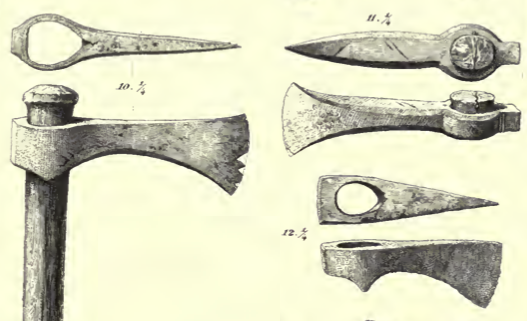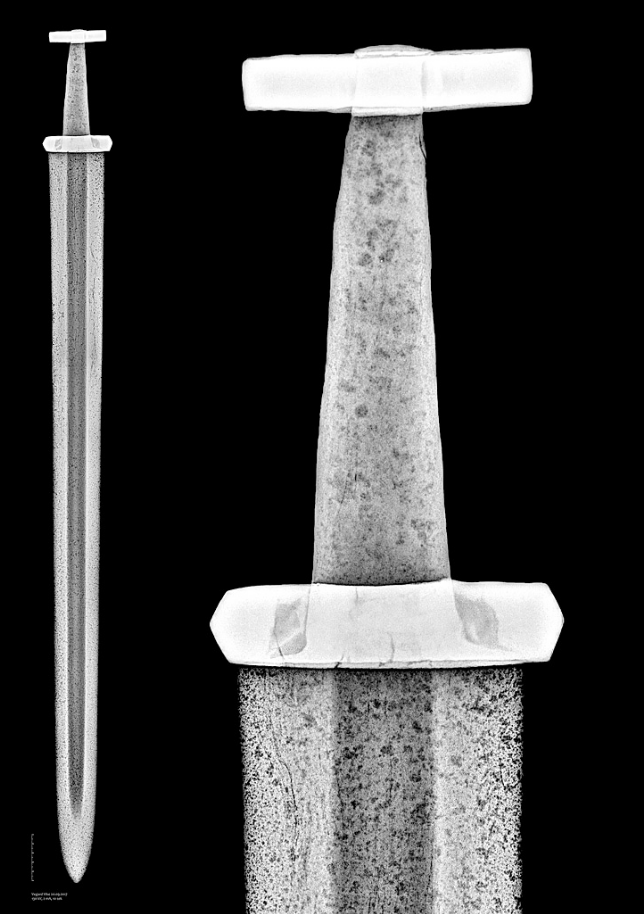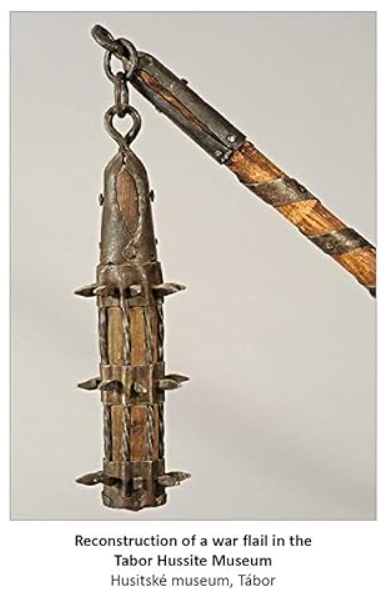
Not sure what you’d like? Have a look at these historical typologies and archeological finds.
Europe.
Roman Antiquity 550 BC - 500 AD
Classical antiquity dates far prior into 800 BC however I am choosing to start this section approximately coinciding with the end of the Iron age and the start of the roman republic until the fall of the Western Roman Empire.
Roman
Christian Miks, 2007. Studien zur römischen Schwertbewaffnung in der Kaiserzeit, Volume 1. Kölner Studien zur Archäologie der römischen Provinzen, ISSN 0945-2893.
Marcin Biborkis and Jørgen Ilkjær., 2006. Illerup Ådal Volume 11-12: Die Schwerter und Die Schwertscheiden. Katalog, Tafeln und Fundlisten", Jutland Archaeological Society Publications.
Roman Weapons Pilum / Lance / Spear / Catapult / Plumbata / Catapult points
Roman Offensive Weapons: The Sword (Gladius and Spatha)
Hedemünden finds at the museum of Northeim, 2009.
Germanic
Faculty of Engineering - Kiel - Germany, Iron, Steel and Swords
FoE- Kiel Germany. Germanic Northern Sword types of the first millennium
FoE - Kiel Germany. Background to Celtic swords
Fitzpatrick 2018. The finds from La Tène in the British Museum.
Radomir Pleiner 1993. The Celtic Sword; Clarendon Press, Oxford.
J. M. De Navarro 1972. The finds from the site of La Tène. Oxford University Press.
Drnić, I. 2012. La Tène spearheads from south-eastern Pannonia and the northern Balkans.
Roman
Roman spatha’s where in part a response to the swords of the Germanic tribes, having similar blade types.
Christian Miks, 2007. Studien zur römischen Schwertbewaffnung in der Kaiserzeit, Volume 1.
Tafel 15: Studien zu nichtrömischen Elementen in der römischen Bewaffnung am Beispiel des gladius Hispaniensis (Mag.-Arbeit)
This one was horrendous to track down references for, Christian Miks publication is fairly recent and definitely still in print but for some reason this illustration isn’t properly credited to him when found in the wild…
Drawings from Roman Military Equipment by Bishop & Coulston, Edition 2, 2006 © M.C. Bishop
Marcin Biborkis & Jørgen Ilkjær, 2006 gladius & spatha hilts
Roman Pilum http://www.romancoins.info/MilitaryEquipment-spear.html
source needed, basic components and construction of a late roman pillum.
Roman axes are mainly infantry kit tools for entrenchment and fortification. Although I highly suspect they would have been used in battle if absolutely necessary, such as in the case of ambush.
Germanic
La Tene sword hilts where mostly wood with metal bolsters, as such most handle reconstructions are speculative
Marcin Biborkis and Jørgen Ilkjær., 2006 Germanic sword types
Fernando Quesada Sanz., 1997 falcata/khopis types
Also seen in greece
J. M. De Navarro 1972. The finds from the site of La Tène.
Lindholmgård Mose sword archived in Copenhagen, total length 85 Cm / 33 inches
important note: scabbard throat is the left end matching the hilt shape.
Drnić, I. 2012. La Tène spearhead typology
Drnić, I. 2012. La Tène spearbutt typology
Roman period adze & axes found in Poland. Kontny. 2019. 179.
Migration era 350 AD - 800 AD
The migration era can be considered a intermediary period between the fall of the western roman empire; subsequent resettlement of former roman territories by the Germanic peoples of western Europe and the beginning of the Viking age. Ironically this period of deromanization sees the beginning of the culture shift towards a Roman Catholic Europe which so strongly characterized the differences between Scandinavians & the Anglo-Saxon / Frankish kingdoms of the later Viking age.
Outside of sword hilts Migration Era typologies have a lot of overlap with those of the Germanic Roman wars & the early Viking age. late Migration typologies are often topologized with finds from the Viking age proper, where earlier types are seen with those of late antiquity.
As such this section is fairly brief. See the works of Jan Petersen 1919 & Kirpichnikov 1966 in the next section for the most common late migration era spears and axes.
K. Böhner. 1986. «German chwerter des 5./6. Jahrhunderts» (Jahrbuch des Römisch-Germanischen zentralmuseums, Mainz, 1986-2)
Elis Behmer 1939 Das zweischneidige Schwert der Völkerwanderungszeit
Engelhardt, 1865. Nydam mosefund 1859-1863
Essentially a continuation or evolution of the spatha into eventually what we would classify as a Viking age sword. The main difference being the laminate hilts comprised of riveted metal and organic materials, typically richly decorated.
Behmer 1939, migration era sword hilt typology
Engelhardt., 1865 Nydam Mosefund
https://www.tf.uni-kiel.de/matwis/amat/iss/kap_b/illustr/ib_3_5.html
Engelhardt., 1865 Nydam Mosefund
Aläxander van't Land. 2013; Böhner. 1986. Merovingian Francesca typology.
7th century; Sutton hoo iron hafted hammer axe (poleaxe) A . S. Dobat 2005. 881.
Poleaxes started as dedicated tools for animal slaughter, the Sutton hoo axe is hypothetically the oldest example of one from the British isles. By the late medieval period martial poleaxes where being made for knightly warfare.
Migration Era axes are lacking in proper typology but are generally best represented by Petersen types A, B, C & Kirpichnikov types I, II, III.
Engelhardt, 1866 migration era (tool?) axes.
Viking age 8th - 11th century
The Viking age is largely popular time frame in modern reenactments, albeit largely poorly represented due to pop culture popularity; it also coincides with the beginning of the Holy Roman Empire and the early Medieval Period.
Hjardar, Kim., & Vegard, Vike. 2019. Vikings At War.
C. Paisnel 2016. The usage and life cycle of Viking Age Swords
Schmitt 2005. Die Alamannen im Zollernalbkreis.
Geibig 1991. Entwicklung des Schwertes im Mittelalter (The Development of the Sword in the Middle Ages.)
Christopher L. Miller The Sword Typology of Alfred Geibig
Petersen 1919 sword Hilt Typology using archaeological examples
Petersen, Jan (1919) In English, The Viking Age Compendium.
Wheeler, R.E.M. (1935) London and the Saxons.
Wheeler, R.E.M. (1927) London and the Vikings, The Viking Age Compendium.
Jan Petersen, 1919 Axe typology 8-12th century.
The Viking age was a heyday for axe typologies; the increased proclivity of mail Armour increased the demand for heavier mass transfer weaponry than could still deal equally with lighter equipped opponents. The relatively cheap cost compared to swords of the period also contributed to their popularity among the opportunistic…
Chronology and typology of Viking age axes. Hjardar – Vike 2019: 163. Modified on Petersen & Kirpichnikov axe typology.
Anatoly Kirpichnikov 1966. axe typology Rus/Ukraine
B. Solberg, 1984 Norwegian Spear-heads from the Merovingian and Viking Periods 7th - 11th century.
Spears are the most common dedicated military weapon of the Viking age, axes among the lower casts often met dual purposes and swords where status symbols of the most fortunate. However the spears purpose was for fighting and few men would ignore sage advice to brave the roads without their iron tipped walking staves.
Chronology and typology of viking age spears. Hjardar – Vike 2019: 174.
Chronology and typology of viking age sword hilts. Hjardar – Vike 2019: 169.
Petersen, 1919 Hilt typology.
Additions to E. Oakeshott 1960. medieval sword typology from Southeastern Europe. M. Aleksić 2007: 28. (I, Ia, II.)
These three typologies while based on oakeshott’s work are contrasted with Giebig’s typology. Aleksić noted that Type II while closest to Oakeshott’s type X & Geibig type 4 exhibited hilt furniture that may date it to the 13th opposed to 10-11th centuries. Possibly a re-hilting of a earlier sword.
Type I & Ia are most closely reminiscent of Geibig type 1 with more noticeable taper, expected to be 9th-11th century forged in the byzantine style without fullers.
Swords of the Viking age are easily the most diverse typological group of weapons. Regional stylizations where rampant and the constant seafaring movement of trade and raids saw a good dispersal of styles across western Europe.
Wheeler, 1927 hilt typology
Geibig 1991 sword blade typology.
Type II compared to 11th century type X and Xa. M. Aleksić 2007: 193, 194.
Modified Wheeler 1935 Seax typology & Schmitt 2005 Blade typology.
illustration by Kirk Spencer
Modified Wheeler 1935 Seax typology illustration by Kirk Spencer.
Seax are a mix of tool knives and war knives that saw widespread use in the early Viking age as less expensive higher status backup weaponry; steadily falling off in favor of dual edged swords. The concept would forever live on into the middle ages proper in the form of falchions and messers.
Middle ages 11th -16th century
James Elmslie, Medieval and Renaissance Single-edged Arms (forthcoming)
A. Querengasser. 2019. Hussite Warfare: The Armies, Equipment, Tactics and Campaigns 1419-1437.
K. Nõmmela. 2017. Medieval swords in Estonia (13th–16th century)
M. Aleksić 2007. Mediaeval Swords from Southeastern Europe. Material from 12th to 15th Century
E, Oakeshott. 2001. The Sword in the age of Chivalry.
E, Oakeshott. 2001. Sword in hand.
G. A. Snook. 1998. The Halberd And Other European Polarms
E, Oakeshott. 1991. Records of the Medieval Sword.
E, Oakeshott. 1960. Archeology of Weapons
Rudof Wegeli 1939. Inventar der Waffensammlung des Bernischen historischen Museums in Bern, Vol. III: Stangenwaffen.
New York Metropolitan Museum of Art. 1917. Educational Charts.
E. J. Brett. 1894. Pictorial and descriptive record of the origin and development of arms and armor.
New York Metropolitan Museum of Art 1917, educational charts
A. Querengasser. 2019. depiction of the Hussite war flail reconstruction in the tabor museum.
Rudof Wegeli 1939. illustrations of Mordaxt (poleaxe’s) from The Historisches Museum in Bern Switzerland.
Polearms are extremely diverse category of medieval arms making typologies difficult. If you can think of something that looked cool on the end of a stick its probably been done in some capacity.
Two handed axes almost universally developed into what we would call poleaxes / pollaxes having various combinations of spikes, hammers and blades in one weapon, often carried as primary weapons by the heaviest armored combatants such as knights. while spear like weapons saw many different styles of thrust and cut typology,
A. Querengasser. 2019. Illustration of polearms from the Hussite Wars 15th century
(For the Kingdom come Deliverance players: From The Holy roman Empire; following the deaths of Wenceslaus the 4th and execution of Christian reformer Jan Hus. During the formal reign of Emperor Sigismund, King of Hungary.)
Rudof Wegeli 1939. illustrations of Mordaxt (poleaxe’s) from The Historisches Museum in Bern Switzerland.
Rudof Wegeli 1939. illustrations of Mordaxt from The Historisches Museum in Bern Switzerland.
These example's are more commonly called halberds however Wegeli does not distinguish them from regular “murder axes”.
Rudof Wegeli 1939. illustrations of Mordaxt (poleaxe’s) from The Historisches Museum in Bern Switzerland.
New York Metropolitan Museum of Art 1917, educational charts
Ewart Oakeshott, 1980. late schiavona hilt typology. 17th century.
James Elmslie, 2015 single edged typology; Ewart Oakeshott, 1960 blade, guard and pommel Typology
Illustration by Peter Johnsson.
Additions to E. Oakeshott 1960. Medieval pommel typology from Southeastern Europe. M. Aleksić 2007: 25.
(D1, E1, H2, Ia, К1, Na,b, N1, Ra,b, R1a,b, T6, Z1, Z2а,b,c, Z3, Z4)
Additions to E. Oakeshott 1960. medieval sword typology from Southeastern Europe. M. Aleksić 2007: 28.
Additions to E. Oakeshott 1960. Medieval guard typology from Southeastern Europe. M. Aleksić 2007: 25.
(4a, 11a, 12a,b,c, 13). For some reason Aleksić didn’t illustrate all of his new types.
Anatoly Kirpichnikov 1966. Mace typology Rus/Ukraine 11th-13th century.
Ewart Oakeshott 1980. late medieval Mace typology.
Medieval Maces and Warhammers where a response to cut resistant armors such as gambeson and chainmail that saw prolific use in the 12th & 13th centuries. By the 14th century armour technology had mostly out paced short blunt mass weaponry however they continued to see use as non-lethal (well kind of) options for law enforcement and ransom hunting.
Battle Axes continued to be used as general purpose mass transfer weapons.
Anatoly Kirpichnikov 1966. flail typology Rus/Ukraine 10th-13th century.
E. J. Brett. 1894. Warhammer illustrations.
Asia.
Japanese 10th - 21st century
Due to resource and cultural constraints Japanese steel technology virtually stagnated from the start of their isolationism until westernization of the late 18th century. As such traditional Japanese blacksmithing techniques are a window into the past almost forgotten by the advance of metallurgy spurred by crucible steels.
Japanese Swords https://www.tf.uni-kiel.de/matwis/amat/iss/kap_b/backbone/rb_6_1.html
Michihiro Tanobe. 2021, The Beauty of the Japanese Sword, History and Traditional Technology. The Japanese Sword Museum. From the Macao Museum of Art https://www.nihonto.com/tanobe-article/
http://www.japaneseswordindex.com/nihonto.htm
Sword preservation has been a bit better in japan due to the nation holding such high regard for swords. meaning we have pretty good examples over the last 10 centuries, problem being the changes are so minor it makes a general typology difficult outside size variation.
Left & right, The Japanese Sword Museum 2021 sword types by period
source needed
Koshi-zori and Naka-zori are the only variations for tachi however katanas also utilize them.
http://www.japaneseswordindex.com/tsuba.htm
good example of the various kinds of blade cross sections. This image is certainly from an academic source researching metallurgy of historical swords, unfortunately i’ve failed to track down the source. if you recognize what study this image is from please contact me.
These are nomenclature diagrams for the different variations within the tachi and katana typologies. images like these are a dime a dozen and are not typically associated with archeology academic sources.




































































